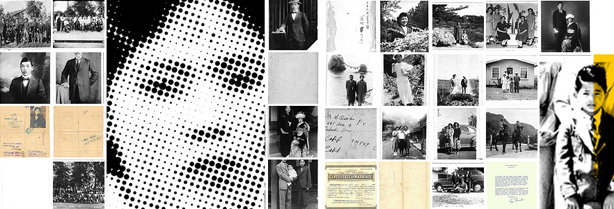CONTEXT: NARRATIVE HISTORIES & DOCUMENTATION
Personal stories have long been used in popular culture to add texture and dimension to broader issues. However, the ubiquity of story today, from NPR to reality TV, Google maps to corporate branding, indicates a need to find alternative manifestations—an approach to story presentation that moves beyond video clips, raw artifacts and capturing the world’s stories, to employing interpretation and synthesis on a specific collection of stories. While acknowledging that some narratives necessarily have fixed outcomes in order to not confuse or alter their impact (such as the recent debates surrounding fake memoirs like “Million Little Pieces” or the absurd persistence of Holocaust deniers), there is an opportunity for design to contribute to the shaping of experiences. Thus, the increasing amounts of information being saved as a result of emerging technologies creates a need for designers to grapple with meaning, representation, and context.
The concept of “retelling” is derived from Walter Benjamin’s essay “The Storyteller.” He writes that the process of retelling stories “was less to increase its didactic content than to refine the tricks with which the attention of the listener was captured” (2). The representations and exhibition strategies I explored are thus intended to productively engage participants, to draw their attention to how these broader issues, such as displacement, touch their own lives. The strategies question the authoritative position of history, truth and fact. It is not about telling one story, but how the presentation of a diversity of individual voices—embracing their fragmentation, incompleteness, and ambiguity—can lead to greater understanding. In this way design can provide another lens—a subjective look into more objective subject matter, by employing approaches that ask people to listen, observe, reflect and construct their own narratives.
In particular, the case study here|there is interested in bringing personal story into public experience for participants who might not be familiar with the content and issues presented, making the issues current and resonant within the participant in a self-reflective manner. Self-reflection is defined as moments of introspection that lead to increased awareness and a willingness to learn, that can result in changes of behavior. Outside of spiritual environments or an occasional meditative moment, there are fewer and fewer experiences in today’s culture that encourage self-reflection. How can we design experiences that allow us to reflect and empathize to hopefully inspire changes in outlook or behaviors.
The content of the case study here|there is collection of open-ended, incomplete, but curious stories about my grandparents’ immigration experience passed down over three generations. These stories have continued resonance now particularly around issues of immigration and displacement (e.g. the U.S./Mexico border, the war in Iraq, lack of response to disasters such as Hurricane Katrina) which echo the same controversies. The question is how to make my stories reach a wider audience in a way that is relevant for today.

Retellings explores:
Imaginative approaches to archived material
Design research offers tools to interpret and visualize via imaginative form-making, experiments and human-centered research. Being a co-editor, storyteller, curator, and maker of artifacts allowed me to tell the stories in multiple fashions and approach them from unexpected angles.
Spaces to discover narrative
Offering a range of different media interactions with which to explore narrative—ambient to controlled, intentional to serendipitous—exhibitions enable the discovery of rich media content in physical space over time. Exploring how exhibitions can emulate a public performance, I am interested creating environments where designer and the audience both perform in the construction of the narrative.
Personal entry points into larger issues
Exploring the relationship between personal narratives and larger, more universal concepts (e.g. current social and cultural issues), Retellings investigates strategies for integrating these dualities in a synergistic and serendipitous manner–by crafting the experience to encourage participants to make personal connections and empathize with the content, and coming to their own understanding of the larger issues and spark a curiosity about the significance of stories.
These concepts are illustrated by the exhibition here|there as well as various research and design methods used.


